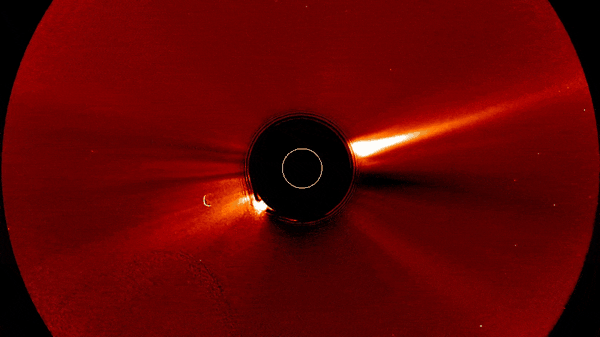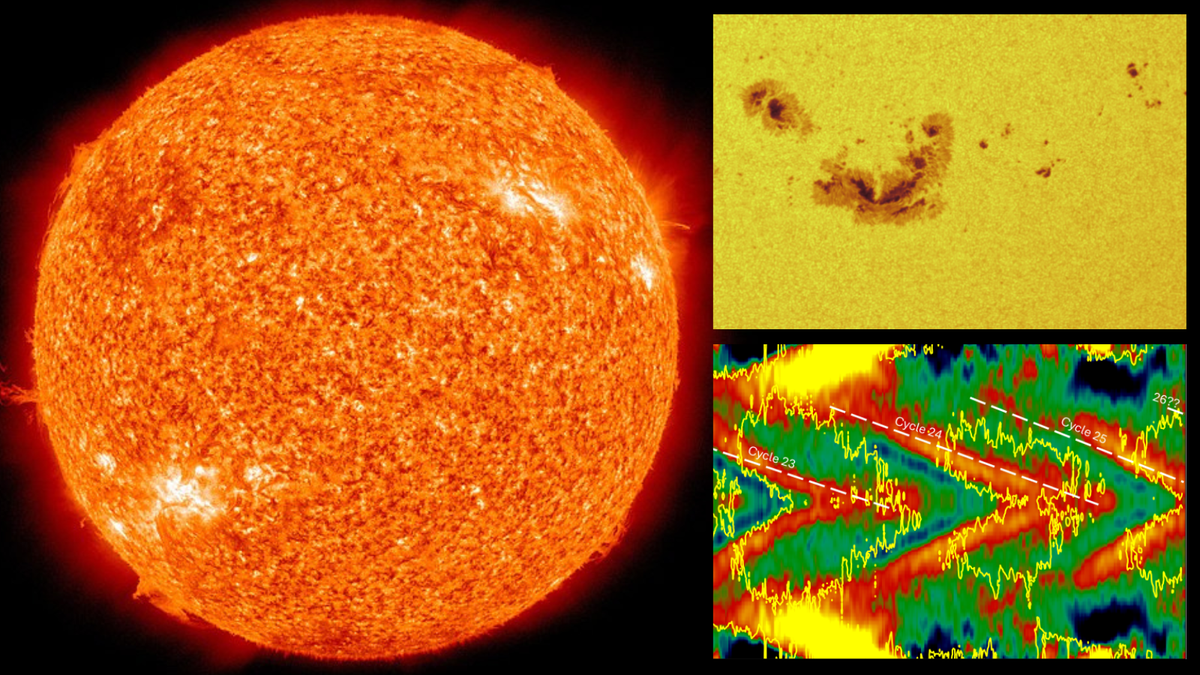Solar scientists have spotted indications that the next solar cycle is beginning. That is despite the fact that it isn’t due for another six years, and the current solar cycle (Cycle 25) is still in progress.
The current solar cycle is expected to reach its peak or “solar maximum” midway through 2025 when the magnetic field of our star will flip and its poles will switch. Leading up to this solar activity has been ramping up with an increase in sunspots, solar flares and eruptions of stellar plasma called coronal mass ejections (CMEs).
Despite the gearing up of Cycle 25 to its peak, it looks like Cycle 26 just can’t wait to tag in. The rumblings of the onset of the next 11-year-long solar cycle came in the form of “starquakes,” sound waves ricocheting through the interior of the sun detected by researchers from the University of Birmingham.
Related: Sun blasts out 2nd X-class flare this week, triggers more radio blackouts (video)
“It’s exciting to see the first hint that the pattern will repeat again in Cycle 26, which is due to start in about six years,” team leader Rachel Howe from the University of Birmingham said in a statement.
Wait your turn Cycle 26!
To spot signs of this overeager solar cycle, Howe and colleagues used a scientific technique called “helioseismology,” which measures starquakes on our star.
Just as seismologists can use seismic waves on Earth to determine the interior of our planet, including its structure and composition, helioseismologists can do the same with sound waves and the sun.
Helioseismology can also determine how the sun rotates. Because the sun is a roiling ball of superheated gas, or plasma, it doesn’t rotate like a solid body. Instead, it experiences a form of rotation called “differential rotation” that sees different layers of the sun moving at different angular velocities.
This creates a visible pattern of bands called “solar torsional oscillation” some rotating faster, some slower. During the solar cycle, these bands move to and from the sun’s poles and its equator. The faster rotational belts usually manifest when the next solar is about to begin.
The University of Birmingham team saw a faint indication that Cycle 26 is starting to manifest in the rotational band data they have been analyzing.
“If you go back one solar cycle – 11 years – on the plot, you can see something similar that seems to join up with the shape that we saw in 2017. It went on to be a feature of the present solar cycle, Cycle 25,” said Howe. “We’re likely seeing the first traces of Cycle 26, which won’t officially start until about 2030.”

NASA’s Solar Dynamics Observatory (SDO) has been observing the sun since 2010, collecting helioseismic data using its onboard Helioseismic and Magnetic Imager (HMI) to help scientists like Howe study solar torsional oscillation signals.
In addition to this, researchers have similar data stretching all the way back to 1995, thanks to the Michelson Doppler Imager (MDI) onboard Solar and Heliospheric Observatory (SOHO).
This means that Howe and colleagues have a picture of the rising phases of Cycles 23, 24, and 25. In fact, Howe has been following the changes in the sun’s rotation for around 25 years, beginning her investigation when scientists only had a portion of data from Cycle 23.
This revealed fast-moving material and sunspots moving to the sun’s equator, a pattern that has repeated in similar ways during Cycle 24 and during the growth of Cycle 25. Now, Howe has hints the same pattern is happening again ahead of Cycle 26.
“With more data, I hope we can understand more about the part these flows play in the intricate dance of plasma and magnetic fields that form the solar cycle,” she concluded.
The team’s research was presented at the Royal Astronomical Society’s National Astronomy Meeting 2024 (NAM 24) in Hull.





















Discussion about this post